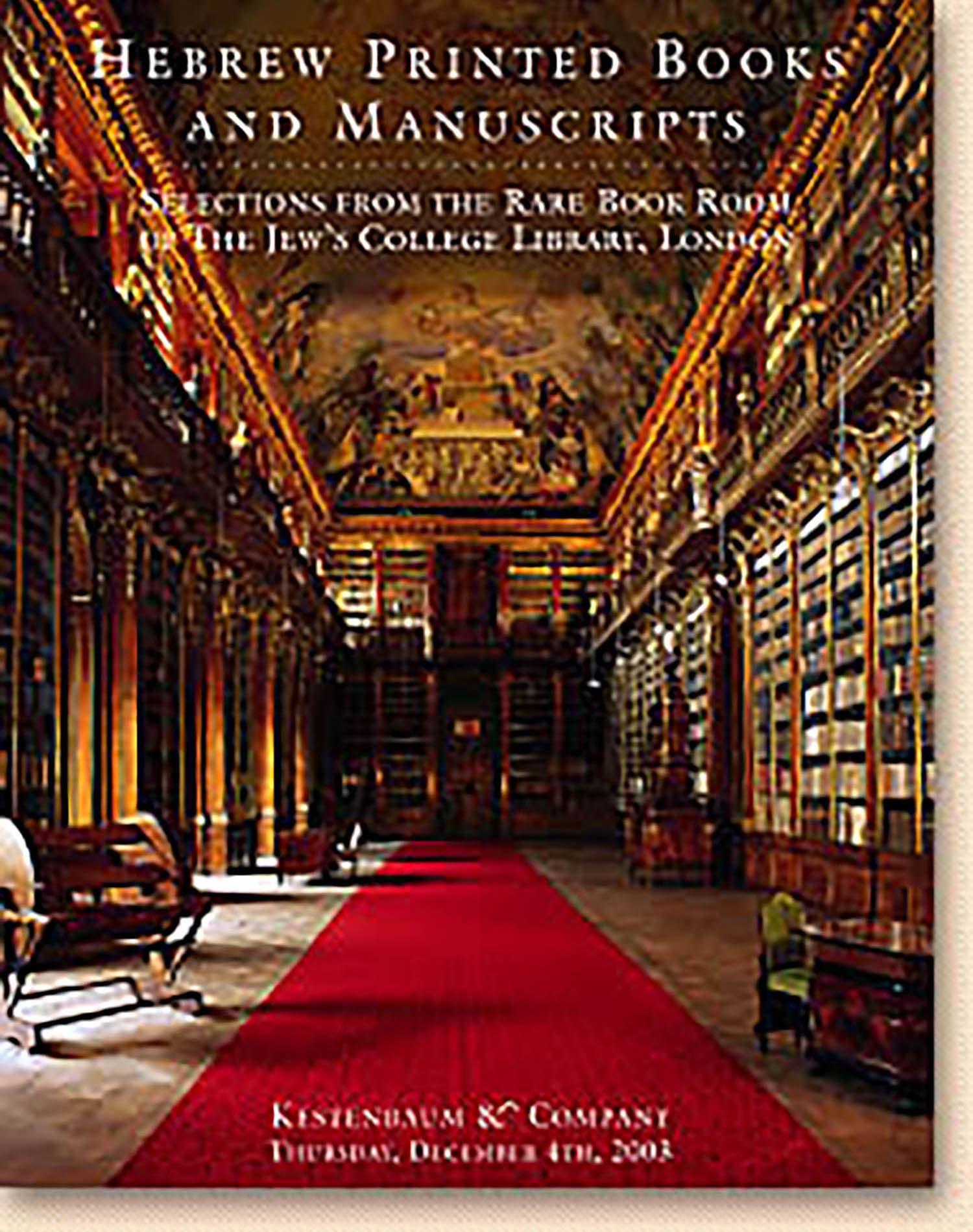KATZ, REUBEN BEN HOESHKE. Yalkut Reuveni [kabbalistic homilies]

AUCTION 21 |
Thursday, December 04th,
2003 at 1:00
Kestenbaum & Company Holds Inaugural Auction of Hebrew Printed Books & Manuscripts at Their New Galleries
Lot 125
(KABBALAH)
KATZ, REUBEN BEN HOESHKE. Yalkut Reuveni [kabbalistic homilies]
Prague: Joseph and Judah Bak 1660
Est: $800 - $1,200
The title, Yalkut Reuveni, is in imitation of the earlier collection on Bible, Yalkut Shim’oni by Simeon of Frankfurt (13th century), but whereas the earlier Yalkut was based on exoteric materials, for the most part Yalkut Reuveni focuses on kabbalistic interpretations. Besides the obvious connection of the title to the author (Reubeni—Reuben), in his introduction, the author turns “Reubeni” into initials for Razei Oraitha Ve-kabbalah Bi-kethivah Ne’imah Yehavith (Mysteries of Torah and Kabbalah in Pleasant Script).
The author, Abraham Reuben Hakohen Sofer of Prague (d. 1673), was the grandson of the illustrious preacher and author of Kli Yakar, Rabbi Solomon Ephraim of Luntshits. (Reuben’s father Hoeshke [Joshua] married Luntshits’ daughter.) In addition to Yalkut Reuveni, Katz authored two other works of Kabbalah, Oneg Shabbath and Davar she-bi-Kedusha (both Sulzbach, 1684).
Our volume is sometimes referred to as “Ha-Katzar” (the Short) to differentiate it from the longer Yalkut Reuveni (“Ha-Gadol”) published in Wilmersdorf in 1681 after the author’s death. The contents of our volume are arranged topically in alphabetical order, whereas the Wilmersdorf edition is arranged according to the Torah portions of the week.
There was a time when scholars were reliant on Yalkut Reuveni for its citations from an alternate version of Sepher Hasidim and from Sodei Razaya by R. El’azar of Worms, but with the rediscovery of these manuscripts, this is no longer the case. Nevertheless, there is still scholarly interest in Katz’s quotations which sometimes turn out to be “creative misreadings” of the source.
The enormous popularity of the work is attested to by the sundry editions it went through.
EJ, Vol.14, cols. 107-108
